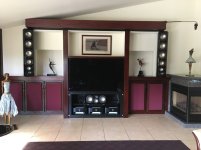While I am sure that individual results vary, I was very dissapointed with the (lack of) service I received from ASC.
I don't know if the rep was new or what. I was looking for specific reccomendations and all the rep would say is "well you could do this" or "you could do that" without ever offering any specifics.
I was in the process of dividing off the very long room in my basement to make an audio room.
I repeatedly ask for a specific plan concerning optimal room size, ceiling and floor construction, absorption and diffusion treatment. All that he would offer were "multiple possible options" with no declaration that any of these "options" would actually be the way to go for the acoustics of my room.
Not what I would expect from a professional company.
If you already have a room, ASC will generally give you (i.e., free) pretty detailed, prioritized recommendations for room treatment. If you want help designing a room, they offer a service for that also, but it is not free.



